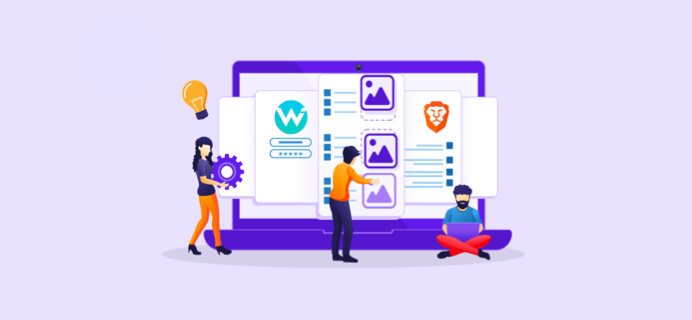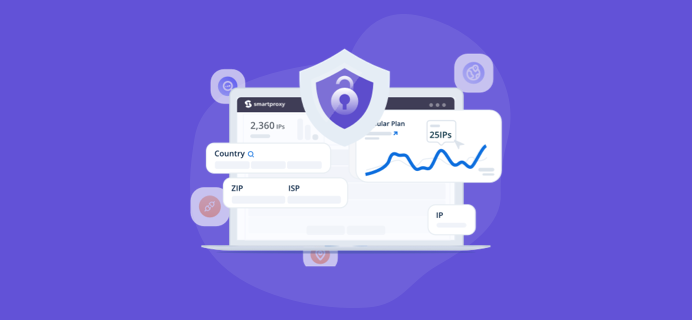As an important data acquisition tool, web crawler often faces the challenge of access barrier when acquiring public data. High frequency scraping or multi-threaded scraping often results in being banned from the site. These sites often identify crawlers based on IP addresses and the User's user-agent. So what strategies should we adopt when we need crawlers to legally access public data?

1, slow down the crawl speed, reduce pressure: Slow down the crawl speed is a common strategy to solve the access barrier when crawlers access public data. The core idea of this approach is to reduce the frequency of visits to the target website, thereby reducing the load on the website server and reducing the risk of being blocked due to frequent requests. However, it is worth noting that while this strategy can improve the stability of access to some extent, it also comes with some obvious challenges and trade-offs.
First, slowing down the fetching speed results in less data being captured per unit of time. For some application scenarios that require large amounts of data, this can significantly extend the time of data acquisition. In cases where there are strong time constraints, this practice of slowing down the fetching speed may not be applicable as well, because the immediacy of the data may be critical.
①The importance of ensuring secure access to your own IP address
Second, slowing down the fetching speed may affect the efficiency of data acquisition. In the race for information, speed is often the key. If the data is updated quickly, and the capture speed is too slow, the collected data may be outdated, thus affecting the accuracy of analysis and decision-making.
To balance the advantages and disadvantages of this strategy, a number of measures can be taken. First of all, according to the access restrictions of the target website and the strictest degree of the anti-crawling mechanism, the crawling speed can be appropriately adjusted to find a speed that can both stable access and maintain high efficiency. Secondly, you can use the way of multi-threading to make full use of resources and improve the efficiency of data collection, but you still need to be careful not to request too frequently.
2, the use of proxy IP: The core role of proxy IP is to forward the crawler's request through the intermediate server to avoid directly exposing the crawler's real IP address. In this way, the risk of being identified as a crawler by the target site can be reduced, while at the same time spreading the access pressure and improving stability. However, there are some key points worth noting in the use of proxy IP to ensure its effectiveness and quality.
First, ensure the stability of the proxy IP pool. A proxy IP pool is a collection that stores multiple proxy IP addresses. In order to capture data continuously, the IP addresses in the pool need to be available. Otherwise, if unavailable proxy IP addresses are frequently encountered, the fetching process will be interrupted and fail. Therefore, it is very important to establish a stable proxy IP pool, monitor IP availability, and eliminate unavailable IP in time.
②Compare the advantage differences between HTTPS and SOCKS5
Second, pay attention to the quality of the proxy IP. Low quality proxy IP may affect fetching speed and data accuracy. Good quality proxy IP should have low response time, high stability, and not easily blocked by the target website. Select a reliable proxy IP provider or manage and maintain the proxy IP pool yourself to ensure high-quality proxy IP, which helps to improve the efficiency and accuracy of data collection.
3, based on ADSL dial-up solutions: under normal circumstances, when you encounter access restrictions during the crawling process, you can re-dial ADSL, obtain a new IP address, and then continue to crawl. However, in the case of multi-site multi-threaded crawling, access restrictions on one site may affect the crawling of other sites, thus slowing down the overall crawling speed.
4, based on dual server ADSL dial-up scheme: In order to deal with access restrictions more effectively, you can consider using two servers that can perform ADSL dial-up to provide IP addresses in the form of proxies. For example, two servers A and B can act as proxies, and the crawler runs on the C server. When a server encounters an access restriction, it immediately switches to another server and re-dials the restricted server. This repeated switching can minimize the impact of access restrictions on the overall crawl speed.
To solve the access barrier of crawler accessing public data, it is necessary to consider the strategies of crawl speed, proxy IP and ADSL dialing. Choosing the most appropriate method according to the specific situation can help the crawler obtain the required data more stably and efficiently, while avoiding the inconvenience caused by access restrictions.
As an important data acquisition tool, web crawler often faces the challenge of access barrier when acquiring public data. High frequency scraping or multi-threaded scraping often results in being banned from the site. These sites often identify crawlers based on IP addresses and the User's user-agent. So what strategies should we adopt when we need crawlers to legally access public data?

1, slow down the crawl speed, reduce pressure: Slow down the crawl speed is a common strategy to solve the access barrier when crawlers access public data. The core idea of this approach is to reduce the frequency of visits to the target website, thereby reducing the load on the website server and reducing the risk of being blocked due to frequent requests. However, it is worth noting that while this strategy can improve the stability of access to some extent, it also comes with some obvious challenges and trade-offs.
First, slowing down the fetching speed results in less data being captured per unit of time. For some application scenarios that require large amounts of data, this can significantly extend the time of data acquisition. In cases where there are strong time constraints, this practice of slowing down the fetching speed may not be applicable as well, because the immediacy of the data may be critical.
①The importance of ensuring secure access to your own IP address
Second, slowing down the fetching speed may affect the efficiency of data acquisition. In the race for information, speed is often the key. If the data is updated quickly, and the capture speed is too slow, the collected data may be outdated, thus affecting the accuracy of analysis and decision-making.
To balance the advantages and disadvantages of this strategy, a number of measures can be taken. First of all, according to the access restrictions of the target website and the strictest degree of the anti-crawling mechanism, the crawling speed can be appropriately adjusted to find a speed that can both stable access and maintain high efficiency. Secondly, you can use the way of multi-threading to make full use of resources and improve the efficiency of data collection, but you still need to be careful not to request too frequently.
2, the use of proxy IP: The core role of proxy IP is to forward the crawler's request through the intermediate server to avoid directly exposing the crawler's real IP address. In this way, the risk of being identified as a crawler by the target site can be reduced, while at the same time spreading the access pressure and improving stability. However, there are some key points worth noting in the use of proxy IP to ensure its effectiveness and quality.
First, ensure the stability of the proxy IP pool. A proxy IP pool is a collection that stores multiple proxy IP addresses. In order to capture data continuously, the IP addresses in the pool need to be available. Otherwise, if unavailable proxy IP addresses are frequently encountered, the fetching process will be interrupted and fail. Therefore, it is very important to establish a stable proxy IP pool, monitor IP availability, and eliminate unavailable IP in time.
②Compare the advantage differences between HTTPS and SOCKS5
Second, pay attention to the quality of the proxy IP. Low quality proxy IP may affect fetching speed and data accuracy. Good quality proxy IP should have low response time, high stability, and not easily blocked by the target website. Select a reliable proxy IP provider or manage and maintain the proxy IP pool yourself to ensure high-quality proxy IP, which helps to improve the efficiency and accuracy of data collection.
3, based on ADSL dial-up solutions: under normal circumstances, when you encounter access restrictions during the crawling process, you can re-dial ADSL, obtain a new IP address, and then continue to crawl. However, in the case of multi-site multi-threaded crawling, access restrictions on one site may affect the crawling of other sites, thus slowing down the overall crawling speed.
4, based on dual server ADSL dial-up scheme: In order to deal with access restrictions more effectively, you can consider using two servers that can perform ADSL dial-up to provide IP addresses in the form of proxies. For example, two servers A and B can act as proxies, and the crawler runs on the C server. When a server encounters an access restriction, it immediately switches to another server and re-dials the restricted server. This repeated switching can minimize the impact of access restrictions on the overall crawl speed.
To solve the access barrier of crawler accessing public data, it is necessary to consider the strategies of crawl speed, proxy IP and ADSL dialing. Choosing the most appropriate method according to the specific situation can help the crawler obtain the required data more stably and efficiently, while avoiding the inconvenience caused by access restrictions.


